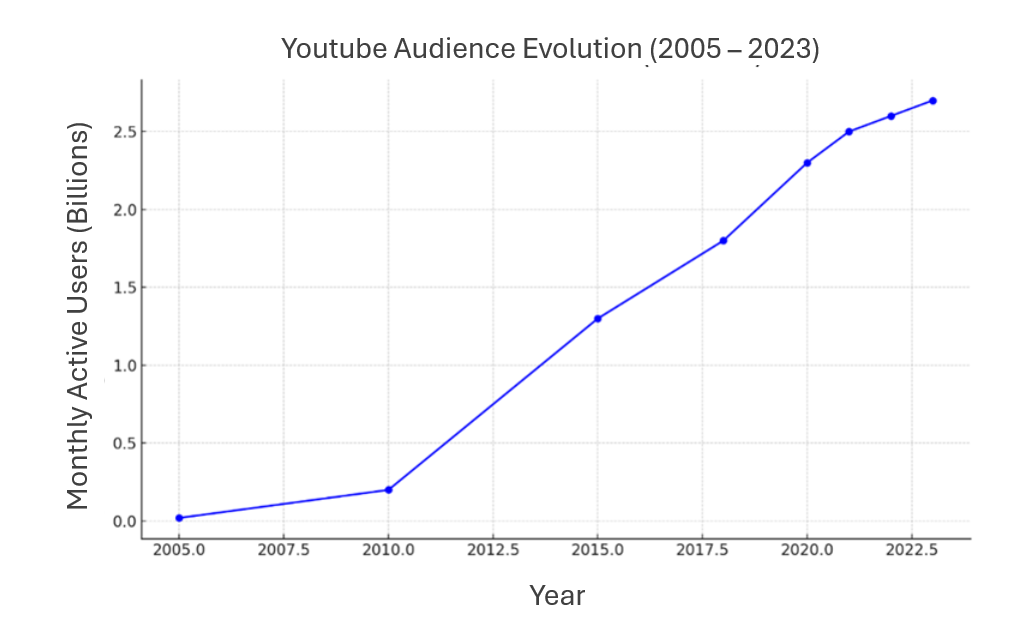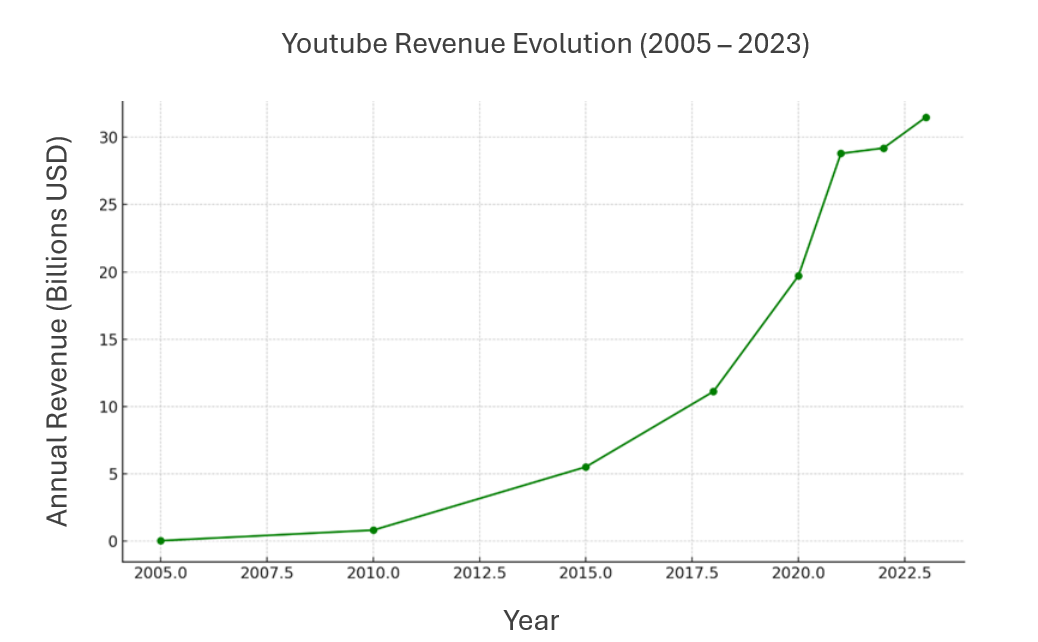

On April 23rd, we celebrated the 20th anniversary of one of the platforms that has most profoundly transformed the internet: YouTube.
In this article, we take a journey through the history of one of the most influential giants of the digital era.
Can you imagine a digital world without YouTube? Hard to picture, isn’t it?
Since a young man named Jawed Karim uploaded a simple video titled "Me at the Zoo" back in 2005, YouTube has continually reshaped how we consume content, leaving a deep mark on pop culture, marketing, and entertainment. Today, with nearly 3 billion monthly active users and an overwhelming volume of content, YouTube is more than a platform — it's a global ecosystem that breathes, grows, and reinvents itself every single day.
YouTube was founded in February 2005 by three former PayPal employees: Steve Chen, Chad Hurley, and Jawed Karim. The idea was born over dinner, as they discussed how hard it was to share large video files via email. From that frustration came the vision for a simple, accessible platform where anyone could upload and share videos online.
A few months later, on April 23rd, 2005, Karim uploaded the first video to the platform: "Me at the Zoo", a 19-second clip that has since become an iconic piece of internet history.
YouTube’s growth was explosive. By its official launch in December 2005, the site was already registering over two million daily views. The success caught the attention of tech giant Google, which acquired YouTube in November 2006 for $1.65 billion in stock — marking the beginning of a new era.
In the early days, YouTube had virtually no business model. The main focus was surviving skyrocketing server costs and navigating copyright issues. With Google’s backing, YouTube began signing deals with major entertainment companies, and in 2007, it launched the YouTube Partner Program, allowing creators to monetize their videos. From that moment on, the platform experienced unstoppable growth, diversifying its revenue streams along the way.
Although questions about profitability arose in 2015, there’s no doubt today that YouTube is one of Google’s most powerful assets.
Since its 2005 debut, YouTube has grown at an extraordinary pace. Some key milestones:


But YouTube didn’t rely on advertising alone. Over time, it expanded its business model to include:
YouTube’s ability to reinvent itself has been key to its success. When competitors like Twitch and TikTok began gaining traction, YouTube responded swiftly, embracing new formats, tools, and services to stay ahead.
Two decades after its creation, YouTube continues to break records:
And the innovation continues. In summer 2025, YouTube will roll out a major update for its Smart TV app, improving navigation, image quality, and user interaction. Additionally, its YouTube TV service will allow users to create custom multiviews — watching up to four channels at once, beyond just sports events.
In fact, for the first time in history, YouTube viewership on television screens has surpassed mobile in the United States — a radical shift in viewing habits that proves how the platform continues to evolve to stay on top.
YouTube started as a side project among friends looking for an easier way to share videos. Today, it’s a cultural phenomenon, a launchpad for creators, and an essential tool for brands, media companies, and consumers worldwide.
At tvads we has a professional team able to advise you on this field and and guide you in any area of your streaming advertising business, advising you or even operating it on your behalf if necessary
All author posts